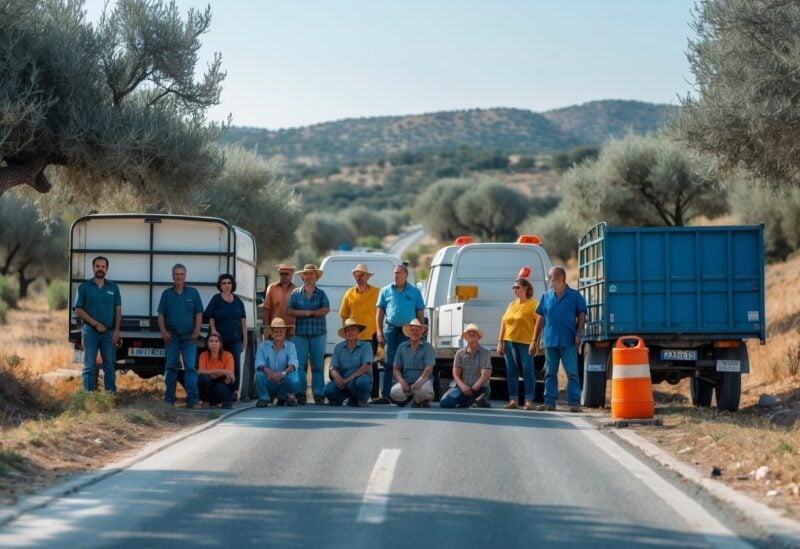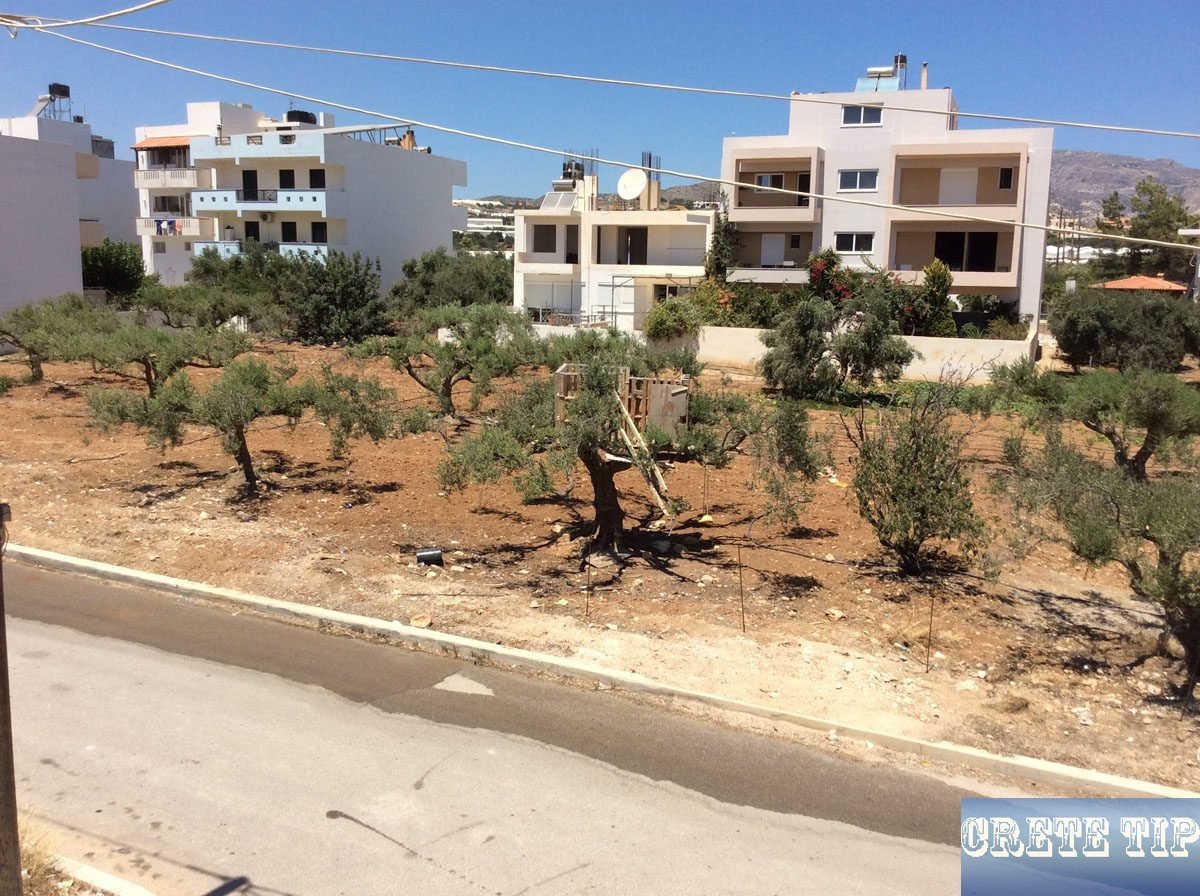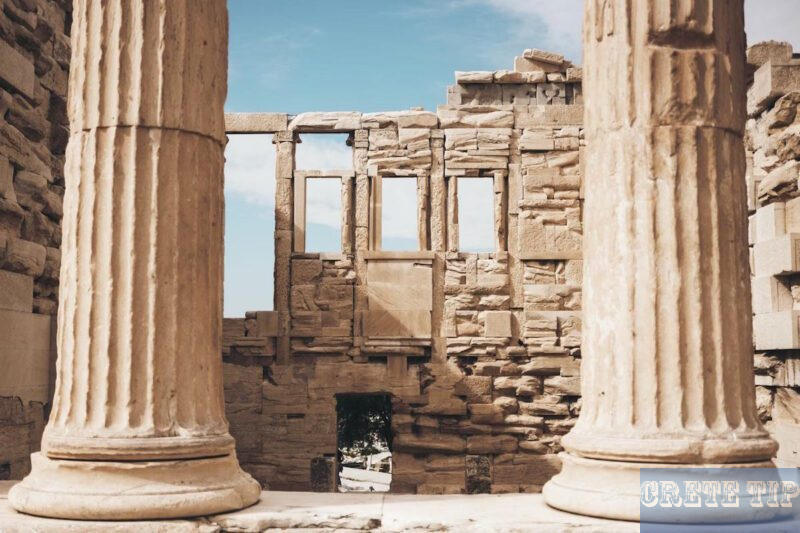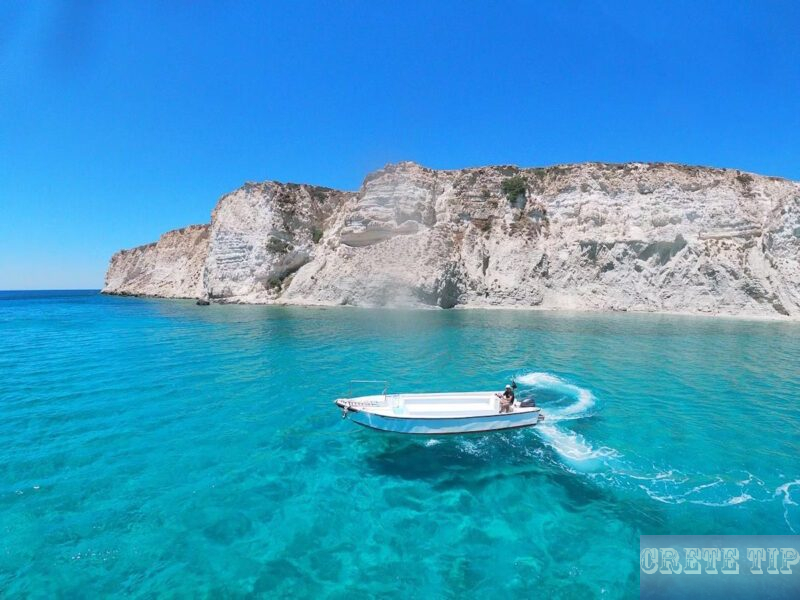BOAK near Heraklion currently open.
Farmers and livestock breeders in Crete have been staging ongoing protests. They’re blocking key roads and public buildings, desperate to draw attention to their growing struggles.
They face severe economic challenges that threaten their survival. It’s a broader crisis for the agricultural community on the island, honestly, and it feels like things are getting worse.
Their demonstrations have caused major traffic headaches, especially in Heraklion and Chania. That really shows just how urgent their demands have become.
The situation raises big questions about sustainability and the future of local farming. There’s a real fear about how this will hit Crete’s rural population in the long run.
Key Takeaways
- Farmers and livestock breeders in Crete are still out protesting, fighting for their survival.
- Roadblocks in major cities have led to serious traffic jams.
- The agricultural community is under heavy economic and social pressure.
BOAK: Farmers and Livestock Breeders Remain at Roadblocks in Heraklion and Chania

Farmers and livestock breeders in Crete are still holding their ground at the BOAK highway roadblocks. These protests continue in Heraklion and Chania, with participants showing real resolve.
Every day, they decide how best to keep things going. The blockades continue to disrupt traffic, aiming to spotlight the agricultural sector’s problems across Crete.
Protesters have said they’ll stay as long as it takes. No one seems ready to back down.
Across Crete, livestock farmers keep up their protests, blocking key points along the Northern Highway. These blockades kicked off recently and are ongoing, mostly in Heraklion and Chania, but folks in Rethymno are involved too, meeting daily to plan their next steps.
The main road stays partially open until about 10:00 in the morning to let students and workers through. After that, it closes and reopens off and on to help with traffic. It’s a tricky balance—they’re trying not to make life impossible for everyone else.
In Chania, the protest site sits between Mournia and Souda, close to Tsikalaria. Leaders keep saying they don’t want to cause chaos; they just want government officials to finally listen.
Protest Impact Summary
Location | Status | Notes |
|---|---|---|
Heraklion | Blockades active | Road partially open until 10:00, then intermittent closures |
Chania | Active blockade | Site between Mournia and Souda |
Rethymno | Active planning | Daily meetings to decide action |
Farmers say their demands come from real, urgent issues that threaten their livelihoods. They want government attention and solutions, not just to block roads for the sake of it.
The protests have led to significant traffic delays and long queues. Still, they’re keeping things peaceful, hoping for change.
Key points to note:
- The main highway closes and opens at intervals to ease traffic.
- Farmers remain united in calling for urgent government action.
- Protests are happening in several key spots across the island.
- They’re trying to work around public needs, like school transport, with their road closure timings.
This movement shows just how essential the farming community is to the region. They’ll go pretty far to make sure their voices are heard.
Producers Raise Survival Concerns and Speak of Economic Strangulation

Producers are up against some serious challenges. Rising production costs and ongoing financial pressures have left many at the edge of collapse.
Lack of cash flow and mounting debts make it nearly impossible for the agricultural and livestock sectors to keep going. There’s a lot of frustration about how government policies are managed, especially when it comes to payment delays.
Producers keep complaining about missed deadlines for subsidies and financial support. It’s chipped away at whatever trust they had in the system.
Livestock farmers have staged protests all over, including major road blockages, demanding real action from the government. They want clear answers from top officials, and their confidence in ministry statements and political promises has pretty much evaporated.
Even with the disruptions, protesters are careful to let emergency vehicles through. Nobody wants to make things worse than they already are.
Key factors adding to the pressure on producers include:
- Increasing cost of production: Feed, equipment, fuel—everything’s more expensive now.
- Accumulating debts: Many are borrowing just to cover daily costs, which only deepens the financial strain.
- Payment delays: Late or smaller payments from subsidy schemes make cash flow even tighter.
- Loss of trust: Ongoing failures in support systems have left producers doubting any government promises.
Challenge | Impact on Producers |
|---|---|
Rising input costs | Profit margins shrink, operating costs go up |
Delayed subsidies | Cash flow stalls, financial instability grows |
Bureaucratic inefficiencies | Lost funds to fines, missed payments |
Policy uncertainty | Producers hesitate to plan or invest |
The economic squeeze on producers threatens the future of the rural economy and food production. If nothing changes, more might have to walk away from their professions.
Fixing production costs and making financial aid more reliable could help stabilize things. But for now, protests and calls for accountability aren’t going anywhere.
Triantafyllakis: “Uncertain If There Will Be Sheep Tomorrow”

Triantafyllakis laid out just how tough things have gotten for livestock farmers. He described scenes where producers can barely afford to feed their sheep, simply because there’s no money left.
The animals are suffering, unable to produce enough milk for their young. It’s a harsh reality many in the agricultural sector are living every day.
He insisted farmers never meant to break any laws, even with all the mess around agricultural payments. But the real focus is on the immediate challenges—especially the rising costs of essentials like animal feed.
Those costs keep climbing, putting farmers under even more financial pressure. Some producers feel stuck in the middle of political games that seem more about winning votes than fixing problems.
It’s led some to take actions that, while understandable, probably won’t solve the deeper issues. Triantafyllakis says the whole community needs to respond in a more organized, united way.
He’s worried about the future of sheep farming itself. Will there even be sheep left to care for soon? Nobody’s sure.
His message is all about unity—the struggle has to be a group effort, not a solo act.
Key Points:
Issue | Details |
|---|---|
Feeding Difficulties | Many farmers can’t afford to feed their sheep |
Animal Welfare | Lambs at risk from milk shortages |
Financial Pressure | Animal feed and essentials cost too much |
Legal Issues | No intent to break the law |
Political Context | Electoral tactics are making things worse |
Call for Action | Everyone needs to work together to secure the future |
Uncertainty | Big doubts about whether sheep farming can survive |
Triantafyllakis’s comments really highlight how economic hardship is tied to animal welfare. Without affordable feed and financial support, farmers face impossible choices—maybe even cutting back on livestock.
He keeps saying that any real solution needs everyone involved. No one can fix this alone.
The truth? Nobody knows what tomorrow will bring for pastoral farming. Farmers see their work—and their future—under threat, and it feels like a turning point for the whole sector.
Traffic Jam Crisis in Heraklion

The road network around Heraklion is under heavy strain right now. Ongoing blockades and a surge in vehicles have pushed the system to its limits.
Drivers heading from Heraklion to Agios Nikolaos have to use the old national road, especially through Karteros. That route just isn’t built for this kind of traffic, and it’s showing—peak hours are a nightmare of congestion.
Tourists haven’t helped either. The season’s still in full swing, so rental cars crowd the roads, making the situation worse and slowing everything down.
Just a few hours of road closures threw the whole Heraklion network into chaos. Long lines formed on the old national road at Nea Alikarnassos and Karteros and clogged up the Heraklion-Agios Nikolaos highway too.
Local police rolled out a traffic control plan to try and keep things moving. Their main focus: vehicles leaving the Industrial Area for Heraklion and those coming into the Industrial Zone (B.I.P.E.), where jams got especially bad.
Area Affected | Issues | Measures Taken |
|---|---|---|
Old National Road (Nea Alikarnassos, Karteros) | Long queues, slow movement | Traffic redirected and managed |
Heraklion-Agios Nikolaos Highway | Heavy congestion | Police traffic control applied |
Industrial Area (B.I.P.E.) | Major bottleneck | Focused traffic regulation |
Key contributing factors
- Road blockades cutting down road capacity
- Forcing everyone onto smaller, less suitable routes
- Tourist traffic—lots of rental cars
- Peak hours making everything worse
Impacts on drivers
- Longer travel times
- More stress and frustration
- Trouble getting to key routes and industrial zones
Rethymno: Ongoing Symbolic Blockades of Public Buildings

Yesterday afternoon, several public buildings in Rethymno saw peaceful protests. Livestock association reps led the way, and things wrapped up by early afternoon without incident.
Protesters left quietly, already planning to return the next morning for a march from Tri Monastiria toward the city center. Their goal: keep the pressure on with steady, organized demonstrations.
Today, they’re setting up symbolic blockades at some big spots—the Regional Authority offices, the Courts, and the Tax Office. The idea is to draw attention to livestock community concerns without causing chaos for everyone else.
Planned sites for symbolic blockades:
Location | Purpose | Planned Action |
|---|---|---|
Regional Authority | Administrative hub | Temporary blockade |
Courts | Legal institution | Peaceful occupation |
Tax Office | Financial services | Controlled access restriction |
The livestock sector’s leaders say they need to stay visible. They’ll watch how things go before deciding on next moves, aiming for a measured, strategic approach so their message lands.
The demonstrations have stayed non-violent, sticking to lawful protest. Authorities know what’s coming, and everyone’s working together to keep disruption to a minimum.
By choosing government buildings, the protesters make their point but try not to upset the broader public. It’s a tricky balance—gotta keep the community on their side as negotiations continue.
Supporters’ expectations:
- Keep protests peaceful
- Communicate grievances clearly
- Pick their moments wisely
- Don’t disrupt daily life for everyone else
So far, the coordination between groups looks tight. It’s a well-planned push aimed at decision-makers, not at stirring up trouble.
Locals and officials are watching closely. Everyone’s waiting to see if these tactics actually move the needle on policy.
Venierakis: “Fighting for Survival and Our Children”
Georgios Venierakis, president of the Rethymno Livestock Association, says this fight isn’t just for farmers. It’s about the whole community, and he’s urging everyone to show up and demand the basic rights people need to survive—both now and for the next generation.
He points out that the sector’s problems go way beyond subsidies. Past governments haven’t really listened to livestock producers, and that’s left deep issues unresolved. Venierakis wants farmers and citizens to stand together and push for real change.
One major issue: forest maps are causing headaches with land ownership. These new rules have started pushing farmers off their land, making it tough to transfer or sell property. That’s a direct threat to agricultural life and puts producers in a tough spot.
If primary production collapses, Venierakis warns, the fallout won’t stop with farmers. Even with lambing season and olive harvest underway, people are still showing up for protests, which says a lot about the level of concern. He’s convinced that only steady effort and public involvement will bring solutions.
The protests aren’t stopping anytime soon. Venierakis says they’ll keep going for days, building up to a nationwide demonstration in Athens on November 11. If the public keeps backing them, he figures the movement could last as long as it needs to. He’s not shy about blaming those who profit from the crisis, either—he thinks they’re making things worse for everyone else.
Key Issues Highlighted | Details |
|---|---|
Long-standing sector problems | It’s not just about subsidies; government hasn’t engaged |
Forest maps impact | Limits on land use, transfers, and sales |
Call for unified action | Everyone—farmers and citizens—needs to join in |
Protest duration | Protests will continue at least until the Athens rally |
Economic accountability | Criticism of those profiting while others struggle |
Venierakis puts a lot of responsibility on the Ministry of Rural Development and Food. He thinks the ministry could turn things around with the right policies and support. Without real intervention, he worries the primary sector—and society as a whole—could be in real trouble.
He keeps calling for practical solutions and ongoing pressure on politicians. The message is clear: if people want to keep their agricultural heritage and give the next generation a shot, they’ll need to stay engaged and keep pushing.
Daskalakis: “Smallpox Threatens Crete”
Daskalakis, vice president of the Livestock Association, says Crete’s animals need vaccinations—fast. Without action, he fears smallpox and plague could devastate the island’s livestock.
He’s adamant: vaccinations have to start right away. If they don’t protect the herds, big losses are likely, and there are already whispers that smallpox has reached Crete.
If those rumors prove true, the government needs to get vaccines from the EU, and quickly, to protect local animals. Daskalakis isn’t buying claims that the vaccines won’t work—he’s pushing authorities to act now and get those supplies in.
Even with little warning, livestock farmers turned out strong for the first mobilizations. Daskalakis expects even more to join as the days go by.
He’s determined to keep fighting and wants the agricultural community’s voice to be loud and clear. On the same day, a group of farmers gathered outside the Rethymno Regional Authority building. Tensions rose for a moment when they tried to get inside the locked building, but things calmed down and they left by choice.
Farmers made a point not to disrupt people’s daily routines—they didn’t block roads or cause jams on the main northern highway (VOAK). Seems like they genuinely want to avoid inconveniencing the public.
Key points:
Topic | Details |
|---|---|
Immediate vaccination need | Urgent, with smallpox and plague risks looming over Crete’s livestock |
Vaccine availability | Government needs to request EU vaccines now |
Farmer mobilisation | Strong turnout so far; more expected |
Public disruption | No plans to block roads or disrupt traffic |
Incident at Rethymno office | Brief tension at locked building, but no escalation |
Urgent risks posed:
- Smallpox possibly already on Crete
- Could spread quickly if left unchecked
- High risk of livestock loss without vaccination
Daskalakis’ stance really drives home how urgent it is to get this threat under control—to protect both animal health and Crete’s economy.
Determined for a Long-Term Roadblock: Livestock Farmers in Chania
Livestock farmers in Chania have set up a blockade on the Northern Road Axis of Crete (VOAK), near Tsikalaria. They’re trying to spotlight urgent problems that threaten their way of life.
They’ve made it clear they won’t budge until the government gives straight answers and real financial help. The mood is tense, and you can almost feel the frustration in the air.
Many of these farmers are young, gritty, and just plain tired. The crisis in livestock farming is pushing them right to the edge.
The president of the Chania Livestock Association spelled it out: no blockade will end without immediate payments. He said Crete can’t just keep lending money to the government while farmers go under.
No one’s checking livestock productivity the way they should, so farmers are just scrambling to keep mother animals alive. That kind of patchwork fix? It could mean losing both newborns and future milk output.
The following table shows some of the major headaches these farmers face:
Issue | Impact on Farmers |
|---|---|
Rising feed costs | Increased expenses reduce profit |
Lower milk prices | Reduced income from primary product |
Low meat prices | Difficulty selling produce at a fair price |
Lack of immediate funding | Financial strain and survival risk |
One young farmer from Anopoli Sfakia came all the way to Chania to join the protest. He talked about how hard it is for newcomers to survive in this business.
Feed prices keep climbing, but milk and meat prices just drop. It’s almost impossible to turn any profit, and honestly, it’s tough to see how people can keep going.
The blockade isn’t just about one thing—it’s about demanding real government action and support that matches the actual conditions farmers face. You get the sense they’re bracing for a long fight.
Check out this article for more on the challenges in animal farming and why so many are desperate for stable solutions in Chania.
Daily Struggles Overwhelm Livestock Farmers, Claiming They Face Destitution

Farmers in the mountainous regions say they’re nearly at breaking point. Their future? It pretty much hinges on financial aid that just isn’t coming fast enough.
Production costs are up, and subsidies are either late or slashed. Add in the price of hauling animals and feed to remote spots, and it’s a tough scene.
A farmer from Anopoli didn’t mince words: without those subsidies, they can’t survive. Many also have to deal with drought, which just makes everything worse.
Someone from Pemonia, Apokoronas, talked about how bad weather and lack of support combine to create a perfect storm. Crops aren’t growing because there’s no rain, so animals go hungry.
Financially and emotionally, it’s rough. The sense of poverty is real, and it’s wearing people down.
Another farmer pointed out how every bit of income just goes back into prepping for the next year. If there’s no help, they can’t keep up with the costs of running things.
Even when production looks good, the market prices are so low that farmers still lose out. It’s a cycle that’s hard to break.
With government payments delayed and controversy swirling around agricultural agencies, local livestock groups have promised to keep protesting until they see real support.
Impact on Transport and Access
Since yesterday afternoon, the main north coast highway near Tsikalaria has been blocked. Traffic from Heraklion and Rethymno going to Chania gets rerouted through the Souda junction.
Drivers leaving Chania for Kissamos can use the Mournies exit. Emergency vehicles are still getting through, thankfully.
Key Challenges | Description |
|---|---|
High production costs | Rising expenses for feed, transport, and general livestock care increasing financial strain |
Delayed or cut subsidies | Government financial support is missing or late, worsening farmers’ ability to cope |
Transport difficulties | Moving livestock and feed to mountain pastures is costly and difficult |
Weather conditions | Drought reduces crop yields needed for animal feed |
Market value drop | Even good yields fail to generate enough income due to poor product prices |
Farmers are losing patience with slow government action and worsening weather. They want subsidies paid out quickly and some kind of ongoing help, or else the whole sector could fall apart.
Farmers’ Key Demands
- Immediate release of overdue subsidies
- Support for transport and feed costs
- Measures to address drought impact on crop production
- Protection of product prices to ensure fair income
The farming community keeps repeating: without urgent steps, survival gets harder by the day. The threat of extreme poverty hangs over them, and losing their way of life seems all too possible.
Rural livestock producers are reaching their limit. Their roadblocks and protests are a last-ditch effort to get the support they desperately need.
Producers Persist at Road Blockade for Second Day – Currently Road Remains Open
Cretan livestock farmers are still out there, holding their ground for a second day at the Northern Crete Road Axis (BOAK), right near the old vehicle inspection centre in Karteros.
They’re frustrated—maybe even more than frustrated—about the rising costs of production and what they see as a lack of real support from the authorities.
Even with the cold biting at night, the farmers haven’t left. They’re sticking to their demand for an honest, meaningful conversation about the crisis facing their sector, which, honestly, sounds like it’s hit a breaking point.
The protest’s stayed peaceful so far. The BOAK hasn’t been completely shut down—they’re letting traffic and emergency vehicles through at certain times.
Local police and other authorities keep tweaking traffic management to keep things as smooth as possible, given the situation.
Some in the group are thinking about moving the blockade. The regional administrative headquarters in Crete could be next on their list.
Key points of their protest:
- High production costs are hitting farm operations hard
- They feel the government hasn’t done enough to help
- They want real, urgent talks with policymakers
- Agriculture on the island feels pretty precarious right now
Details | Description |
|---|---|
Location | BOAK near former KTEO in Karteros |
Duration | Second day ongoing |
Road status | Partially open, controlled access |
Weather | Cold night, no withdrawal from protestors |
Possible next steps | Relocation towards Crete’s regional office |
Local authorities keep an eye on things and adjust traffic controls when they need to, trying to keep everyone safe—drivers and protesters alike.
This protest really shines a light on the tough spot rural industries in Crete are in. There’s a growing sense that policy changes are overdue if sustainable farming is going to survive here.




